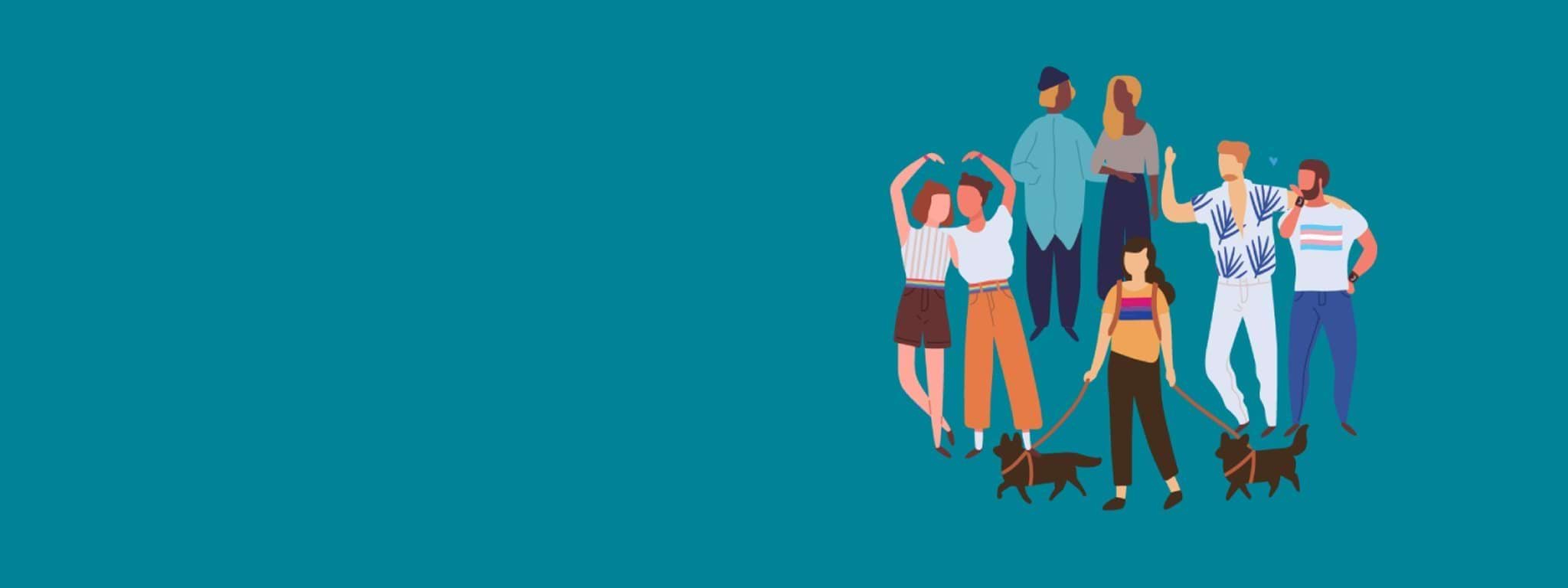- Published by:
- Department of Families, Fairness and Housing
- Date:
- 6 Feb 2022
Victoria’s first whole-of-government LGBTIQA+ strategy, Pride in our future: Victoria’s LGBTIQA+ strategy 2022-32, provides the vision and plan to drive equality and inclusion for Victoria’s diverse lesbian, gay, bisexual, trans and gender diverse, intersex, queer and asexual (LGBTIQA+) communities within all aspects of government work over the next decade.
Easy English, summaries and accessible versions of our strategy
LGBTIQA+ communities
LGBTIQA+ Victorians are valued members of our community who add to our diversity and make Victoria a better place to live.
Foreword
We’re proud to be a state that celebrates and embraces diversity, and where human rights are always defended and protected.
Introduction
Every Victorian – without exception – deserves to be safe, supported and equal.
The call for change
LGBTIQA+ voices are at the heart of Victoria’s first LGBTIQA+ strategy. These voices are central as we design programs and deliver on our commitments.
Towards equality
As we look to the future of LGBTIQA+ equality in Victoria, it is important to know where we have come from and what progress we have made.
Framework for change
The Victorian Government commits to improving the lives of all LGBTIQA+ people and communities. This includes ensuring the systems, policies and services we provide and fund are accessible.
Priority area 1: Equal rights and freedoms
Strengthening existing legal protections for LGBTIQA+ Victorians and ensuring we create laws with an equity lens will benefit all community members.
Priority area 2: Equitable, inclusive and accessible services
Services should be approachable, welcoming, safe and inclusive for all Victorians throughout their journey and when moving between Victorian Government services.
Priority area 3: Visibility to inform decision making
Improving LGBTIQA+ data collection to build evidence will enable us to get a better picture of how LGBTIQA+ Victorians experience all parts of their lives.
Priority area 4: Safe, strong and sustainable communities
By creating inclusive communities, we are making sure there is a place for all Victorians to be proud and live their life to its fullest.
Delivering on the vision
To improve the lives of LGBTIQA+ Victorians, we will work with communities to deliver on actions and keep them informed as we progress this important roadmap for change.
Definitions and key terms
We define key terms below and acknowledge that people have different definitions. Language has changed and continues to evolve.
Annual updates
We will report each year across the strategy’s 10-year lifetime on the delivery of actions under each priority area.
Updated
